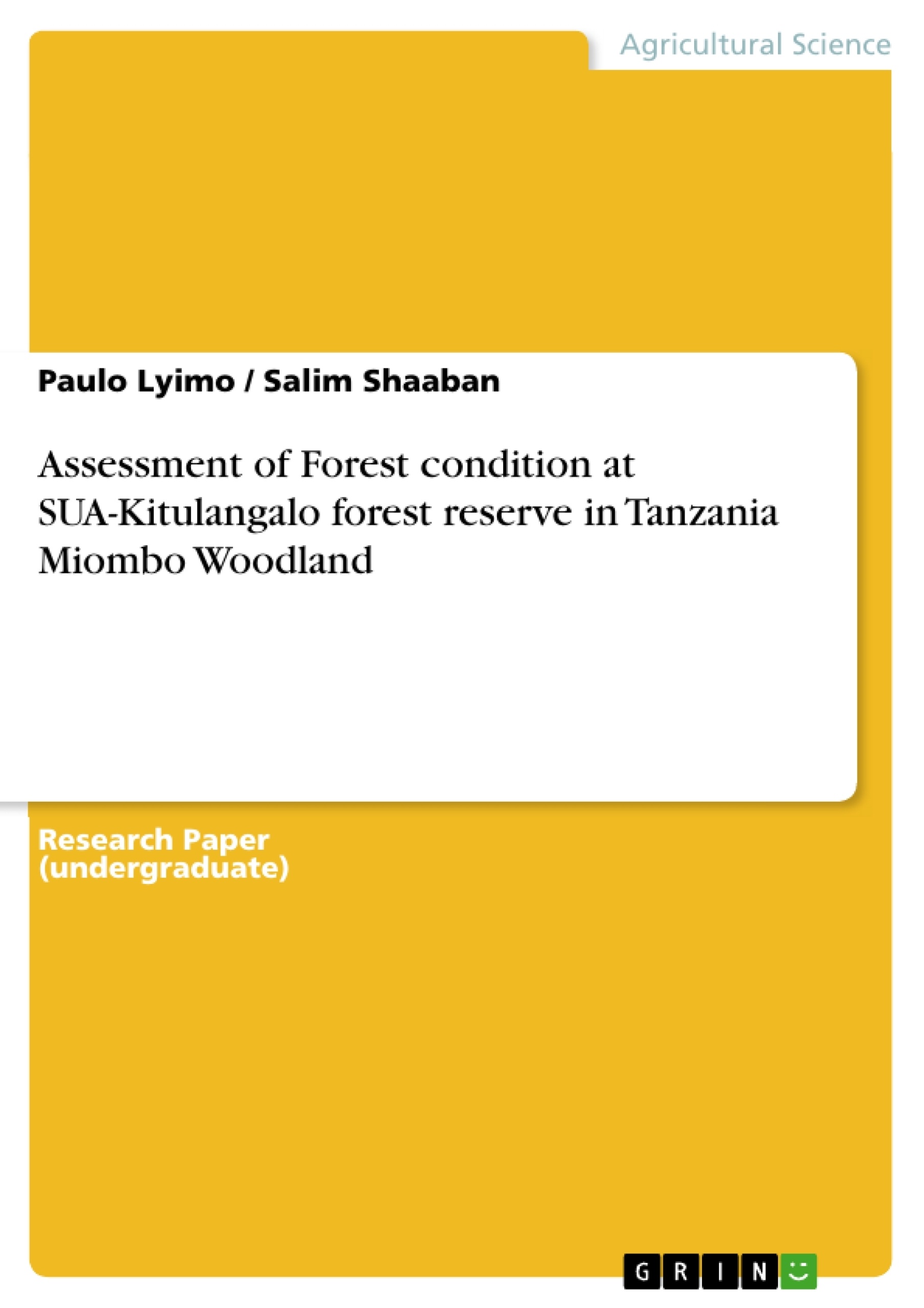There is high deforestation and forest degradation estimated to be 400,000ha per annum between 1990 and 2013 in Tanzania forests. This is due to the increase in wood demand for energy and for industrial raw materials. The study was conducted to assess forest condition of Sokoine University of Agriculture - Kitulangalo Forest Reserve (SUA KFR). A total of 52 nested circular plots with radii of 2, 5, 10, and 15 m were used to collect data such as diameter at breast height (DBH), height and number of regenerants. Parameters computed for data analsysis were stem per ha (N), number of regenerants, dominant tree species, exotic species, basal area per ha (G) and volume (standing and removed) per ha (V). A total of 71 tree species were identified and recorded during inventory, the average 995±256 stems/ha of different tree species of various DBH class, the average basal area per ha, G=7.961268±0.8 m2/ha and the mean standing total volume, 54.72914±11.3 m3/ha were also computed. The mean total volume removed is 0.58 m3 per ha which is very small compared to stocking. The dominant tree (richness) species includes Julbernardia globiflora (17%), Brachystegia speciformis (8%), Acacia nigrescens (7%), Acacia robusta (6%), Albizzia harveyi (5%), Scierocaryabirrea spp/ Caffra (5%) and others i.e total of all <5% (52%). The conducted inventory shown that there is an average of 6121±2777regenerants per ha. Only Senna siamea was identified as exotic species which planted beside the forest boundary as a demarcation. In general, forest structure parameters indicate that SUA KFR is in a good condition as have high species richness and stem density per ha. We recommend more research on assessing forest condition in other forests in order to be aware with their status and look forward for the proper management measures.
Inhaltsverzeichnis (Table of Contents)
- Abstract
- Introduction
- Materials and methods
- Study site
- Data collection
- Data analysis
- Results and Discussion
- Tree species composition at SUA-KFR
Zielsetzung und Themenschwerpunkte (Objectives and Key Themes)
This study aims to assess the forest condition of the Sokoine University of Agriculture - Kitulangalo Forest Reserve (SUA KFR) in Tanzania. The research focuses on evaluating various forest parameters, such as stem density, basal area, and volume, to determine the overall health and structure of the forest.
- Forest condition assessment in the SUA-KFR
- Tree species composition and diversity
- Regeneration and sustainability of the forest ecosystem
- Impact of human activities on the forest
- Management implications for the sustainable use of forest resources
Zusammenfassung der Kapitel (Chapter Summaries)
The study begins with an introduction that highlights the significance of miombo woodlands in Tanzania and the challenges posed by deforestation and degradation. The research methodology section details the study site, data collection methods, and data analysis techniques used to assess the forest condition. The chapter on results and discussion presents the findings of the inventory, including the tree species composition, regeneration status, and other relevant forest parameters.
Schlüsselwörter (Keywords)
The study focuses on key concepts such as forest condition, miombo woodland, stem density, basal area, volume, tree species composition, regeneration, and forest management. The research provides insights into the status of the SUA-KFR and its potential for sustainable use.
- Quote paper
- Paulo Lyimo (Author), Salim Shaaban (Author), 2015, Assessment of Forest condition at SUA-Kitulangalo forest reserve in Tanzania Miombo Woodland, Munich, GRIN Verlag, https://www.hausarbeiten.de/document/288083


